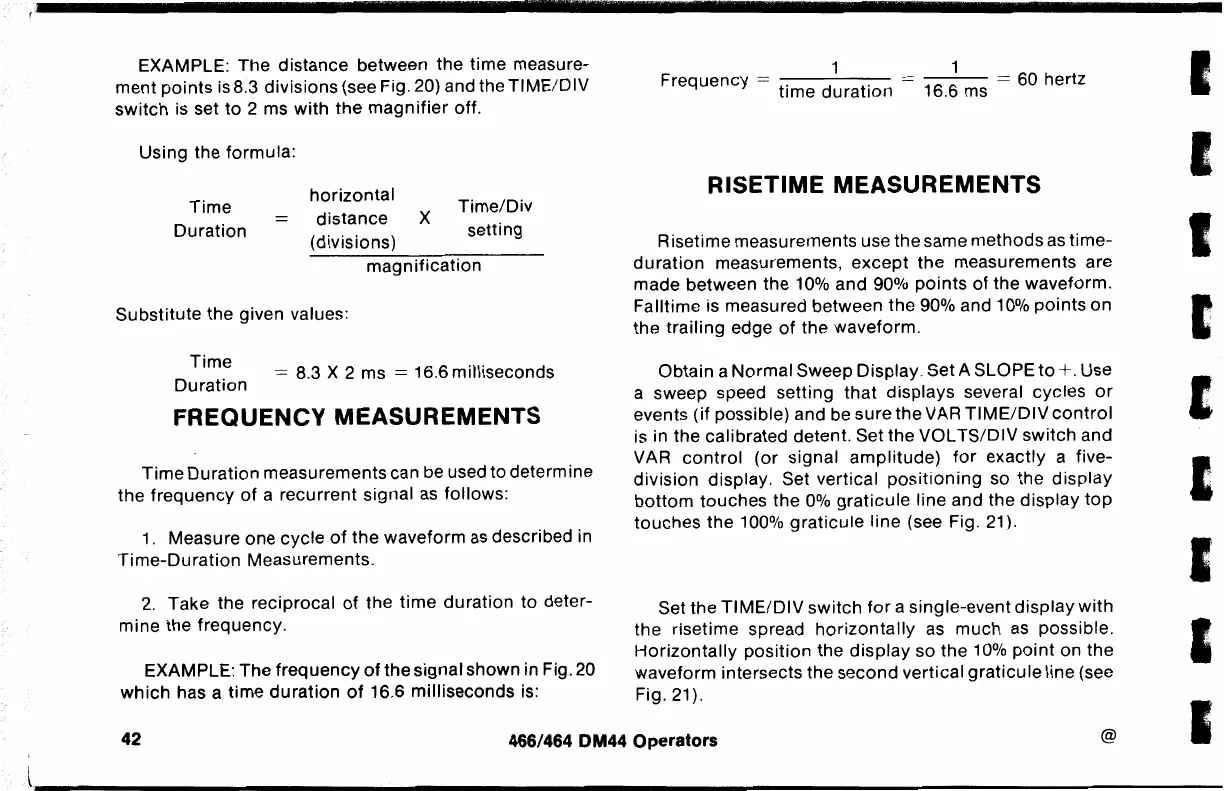EXAMPLE: The distance between the time measure-
ment
points
is
8.3 divisions (see Fig. 20) and the TIME/DIV
switch is set to 2 ms
with
the
magnifier
off.
Using the formula:
Time
Duration
horizontal
distance X
(divisions)
Time/Div
setting
magnification
Substitute the given values:
Time
Duration
= 8.3 X 2 ms = 16.6 milliseconds
FREQUENCY MEASUREMENTS
Time
Duration measurements can be used to determine
the
frequency
of
a recurrent signal
as
follows:
1.
Measure one cycle
of
the
waveform
as
described in
Time-Duration
Measurements.
2.
Take the reciprocal
of
the
time
duration to deter-
mine the frequency.
EXAMPLE: The
frequency
of
the signal shown in Fig. 20
which
has a time
duration
of
16.6 milliseconds is:
Frequency
= time
duration
16
.
6
ms
= 60 hertz
RISETIME MEASUREMENTS
Risetime measurements use the same methods
as
time-
duration
measurements,
except
the measurements are
made between the 10% and 90%
points
of
the waveform.
Falltime is measured between
the
90% and 10% points on
the
trailing
edge
of
the waveform.
Obtain a Normal Sweep Display. Set A SLOPE
to+.
Use
a sweep speed setting
that
displays several cycles
or
events (if possible) and be sure the VAR
TIME/DIV
control
is in the calibrated detent. Set the VOL
TS/DIV
switch and
VAR
control
(or signal
amplitude)
for
exactly
a five-
division display. Set vertical
positioning
so the
display
bottom
touches the
0%
graticule
line and the
display
top
touches
the 100%
graticule
line (see Fig.
21
).
Set the
TIME/DIV
switch
for
a single-event display
with
the risetime spread
horizontally
as
much
as
possible.
Horizontally
position the
display
so the
10%
point
on the
waveform intersects the second vertical graticule line (see
Fig.21).
42
466/464 DM44 Operators
@
I
I
I
I
I
I

